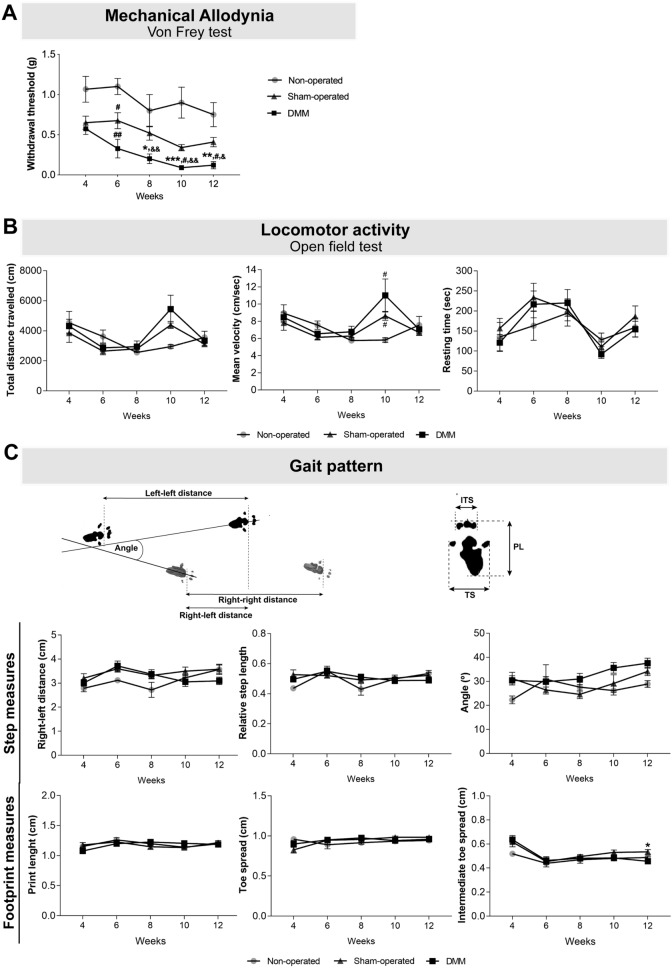Figure 1.
The OA post-traumatic DMM model was characterized by the presence of mechanical allodynia. Mechanical allodynia (A), and alterations in locomotor activity (B) and gait pattern (C) were assessed 4, 6, 8, 10 and 12 weeks after the knee joint traumatic lesion. The Von Frey data analysis showed that DMM mice presented increased mechanical allodynia when compared with sham-operated, starting at week 8. No effects were observed in the locomotor activity. A decrease in the ITS was observed in the DMM mice. Results are presented as mean ± SEM, n = 5 in the control group and n = 8 in the sham-operated and DMM groups. *Indicates differences between sham-operated and DMM groups; #indicates differences when compared with non-operated group; &indicates differences when compared with week 4; *p < 0.05; **p < 0.01; ***p < 0.001; #p < 0.05; ##p < 0.01; &p < 0.05; &&p < 0.01. ITS intermediate toe spread, PL print length, TS toe spread.

